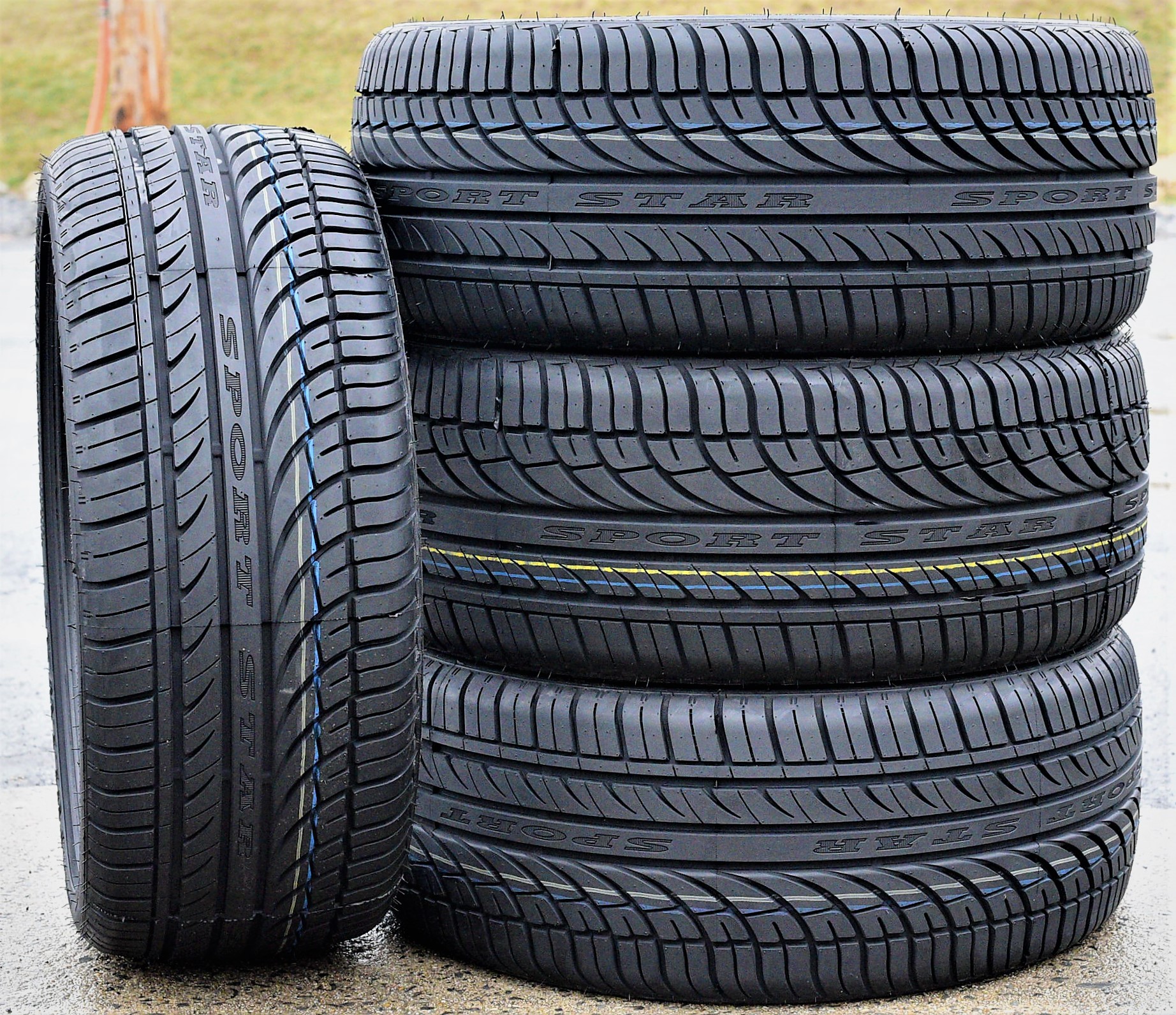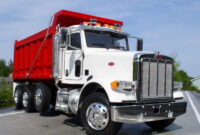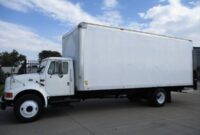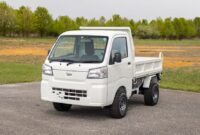Tires For Pickup Trucks: The Foundation of Performance and Safety pickup.truckstrend.com
A pickup truck is more than just a vehicle; it’s a versatile tool, a workhorse, and often, an extension of its owner’s lifestyle. From hauling heavy loads and conquering rugged trails to serving as a comfortable daily driver, pickups demand components that can handle diverse challenges. At the very heart of a pickup truck’s performance, safety, and capability are its tires. Far from being a mere accessory, the right set of tires dictates traction, fuel efficiency, ride comfort, and ultimately, the truck’s ability to fulfill its intended purpose. Choosing the optimal tires for your pickup isn’t just about finding the right size; it’s about understanding the nuances of their design, construction, and how they align with your specific needs and driving conditions. This comprehensive guide will delve into everything you need to know about selecting, maintaining, and understanding tires for pickup trucks.
Understanding the Anatomy of a Pickup Truck Tire
Tires For Pickup Trucks: The Foundation of Performance and Safety
Before diving into types and considerations, it’s essential to grasp the basic markings on a tire’s sidewall. These codes provide crucial information about the tire’s specifications:
- LT vs. P: This is often the first distinction for pickup tires.
- "P" (Passenger): Indicates a tire designed for passenger vehicles, including some light-duty SUVs and crossovers. While some light pickups might use P-metric tires, they are generally not recommended for heavy hauling or towing.
- "LT" (Light Truck): Denotes a tire specifically engineered for light trucks, SUVs, and vans, built with stronger sidewalls and higher load capacities to withstand heavier loads and more demanding conditions. Always opt for LT tires if your truck regularly hauls or tows.
- Size (e.g., LT265/70R17):

- 265: Tread width in millimeters.
- 70: Aspect ratio (sidewall height as a percentage of tread width).
- R: Radial construction.
- 17: Rim diameter in inches.

- Load Range (e.g., C, D, E, F): This indicates the tire’s ply rating and its maximum load capacity at a specific inflation pressure. Higher letters (E, F) signify greater load-carrying capability. For instance, Load Range E is common for heavy-duty trucks.
- Load Index and Speed Rating: A numerical load index (e.g., 121) corresponds to the maximum weight the tire can carry, and a letter speed rating (e.g., S, T, H) indicates the maximum safe speed for the tire.
Types of Pickup Truck Tires: Matching Your Terrain and Task

The diverse applications of pickup trucks necessitate a variety of tire types, each optimized for specific performance characteristics.
-
Highway Terrain (HT) Tires:
- Characteristics: Designed for smooth, quiet, and comfortable on-road driving. They feature a shallower, less aggressive tread pattern, prioritizing fuel efficiency and long tread life on paved surfaces.
- Ideal Use: Daily commuting, light hauling, urban driving, and primarily highway use where off-road excursions are rare.
- Pros: Excellent road manners, good fuel economy, quiet ride, long tread life.
- Cons: Limited traction in mud, snow, or extreme off-road conditions.
-
All-Terrain (AT) Tires:
- Characteristics: The most popular choice for pickup owners, AT tires strike a balance between on-road comfort and off-road capability. They have more aggressive tread blocks and deeper grooves than HT tires, often with reinforced sidewalls.
- Ideal Use: Mixed driving, including highway, gravel roads, light off-roading, and occasional mud or snow. Perfect for the truck owner who needs versatility.
- Pros: Good off-road traction, decent on-road manners, durable, suitable for light towing.
- Cons: Can be slightly noisier than HT tires, potentially lower fuel economy, not ideal for extreme mud or rock crawling.
-
Mud-Terrain (MT) Tires:
- Characteristics: Built for extreme off-road conditions, MT tires feature very large, widely spaced tread blocks, deep voids, and often reinforced sidewalls to resist punctures. Their aggressive design excels at clearing mud, dirt, and rocks.
- Ideal Use: Serious off-roading, rock crawling, deep mud, construction sites, and challenging wilderness trails.
- Pros: Unmatched off-road traction, excellent self-cleaning capabilities, robust construction.
- Cons: Very noisy on pavement, reduced fuel economy, faster wear on highways, less comfortable ride, poor traction on ice.
-
Specialty Tires:
- Winter/Snow Tires: Feature specific rubber compounds that remain flexible in cold temperatures and aggressive siping for enhanced grip on ice and snow.
- Rib/Commercial Tires: Often seen on heavy-duty work trucks, these tires prioritize durability and high load capacity, typically with a multi-rib pattern for stability and long wear on paved roads.
- Hybrid Terrain (RT/XT): A newer category blending characteristics of AT and MT tires, offering a more aggressive look and improved off-road bite than ATs, but with better on-road manners than traditional MTs.
Key Considerations When Choosing Pickup Truck Tires
Selecting the right tires involves more than just picking a type; it requires a thoughtful assessment of your truck’s application and your driving habits.
-
Vehicle Application & Usage:
- Daily Driver (mostly pavement): HT or mild AT tires for comfort and efficiency.
- Towing/Hauling: LT tires with a sufficient load range (E or F for heavy loads) are critical for safety and stability.
- Occasional Off-roading: AT tires offer the best balance.
- Dedicated Off-roader: MT tires are the only choice for extreme conditions.
- Winter Driving: Consider dedicated winter tires for optimal safety in snowy/icy climates.
-
Load Capacity (Load Range): This is paramount for pickups. Ensure the tires’ load range (e.g., C, D, E) meets or exceeds your truck’s Gross Vehicle Weight Rating (GVWR) and Gross Combined Weight Rating (GCWR) if you tow. Undersized load capacity can lead to tire failure, instability, and serious safety risks. Always check your vehicle’s door jamb placard for recommended specifications.
-
Tread Pattern & Compound: The tread design directly impacts traction, noise, and wear. A softer rubber compound provides better grip but wears faster, while a harder compound offers longevity but less ultimate traction.
-
Tire Size: Sticking to the OEM recommended size is generally best for maintaining speedometer accuracy, vehicle stability, and warranty. If you plan to modify your truck with larger tires, consult a professional to ensure proper fitment, clearance, and to understand potential impacts on suspension, gearing, and braking.
-
Road Noise & Comfort: Aggressive tread patterns, while great for off-road grip, often result in increased road noise and a less comfortable ride on pavement. Consider your tolerance for these factors if most of your driving is on highways.
-
Durability & Longevity: Look for tires with good treadwear ratings (UTQG Treadwear) and robust construction, especially if you drive on rough roads or frequently encounter hazards. LT tires are inherently more durable than P-metric tires.
-
Budget: While it’s tempting to save money, tires are a critical safety component. Invest in quality tires that match your needs. Higher-priced tires often offer better performance, durability, and a longer warranty.
Essential Maintenance Tips for Pickup Truck Tires
Proper maintenance extends tire life, ensures safety, and optimizes performance.
- Regular Tire Pressure Checks: This is the single most important maintenance item. Check pressure at least monthly, and always before long trips or when carrying heavy loads. Refer to your truck’s door jamb placard (not the tire sidewall) for the recommended cold inflation pressure. Under-inflation leads to excessive heat buildup, premature wear, and reduced fuel economy. Over-inflation can cause a harsh ride, uneven wear, and reduced traction.
- Tire Rotation: Rotate your tires every 5,000-7,500 miles (or as recommended by the manufacturer) to ensure even wear across all four tires. This prevents irregular wear patterns and maximizes tread life. For 4×4 vehicles, ensure all four tires are the same type, size, and tread depth to prevent driveline strain.
- Wheel Alignment: If your truck pulls to one side, the steering wheel is off-center, or you notice uneven tire wear, have your alignment checked. Proper alignment ensures your tires track straight and wear evenly.
- Tread Depth Monitoring: Use a tread depth gauge (or the built-in wear bars) to monitor your tread. Most states require a minimum of 2/32 inch tread depth, but performance significantly degrades below 4/32 inch, especially in wet or snowy conditions.
- Tire Balancing: If you feel vibrations in the steering wheel or seat, your tires might be out of balance. Proper balancing ensures smooth rotation and prevents premature wear.
- Regular Inspection: Periodically inspect your tires for cuts, cracks, bulges, punctures, or embedded objects. Address any damage promptly.
Table: Estimated Price Ranges for Common Pickup Truck Tire Types
Note: Prices are highly variable based on brand, specific model, retailer, region, and current promotions. These are general estimates per tire for popular sizes (e.g., 17-20 inch rim diameter) and serve as a guide.
| Tire Type | Typical Size Range (Rim Dia.) | Estimated Price Range (per tire) | Key Characteristics & Best Use |
|---|---|---|---|
| Highway Terrain (HT) | 17-20 inch | $150 – $280 | Quiet, comfortable, fuel-efficient on pavement. Best for daily driving, light hauling, mostly highway use. |
| All-Terrain (AT) | 17-20 inch | $180 – $350 | Versatile balance of on-road comfort and off-road traction. Good for mixed driving, light off-roading, moderate towing. |
| Mud-Terrain (MT) | 17-22 inch | $250 – $450+ | Aggressive tread for extreme off-road grip in mud, rocks, and dirt. Noisy on pavement, lower fuel economy. |
| Winter/Snow | 17-20 inch | $180 – $350 | Optimized for cold weather, ice, and snow. Softer compounds and aggressive siping. |
| Commercial/Rib | 16-19.5 inch | $180 – $400 | High load capacity, extreme durability. Best for heavy-duty work trucks and constant hauling on paved roads. |
| Hybrid Terrain (RT/XT) | 17-20 inch | $220 – $400 | More aggressive than ATs, better road manners than MTs. For a balance of rugged looks and capable performance. |
Frequently Asked Questions (FAQ)
Q1: How often should I rotate my pickup truck tires?
A1: Generally, every 5,000 to 7,500 miles, or as recommended in your truck’s owner’s manual. Regular rotation ensures even wear and extends tire life.
Q2: Can I put passenger car (P-metric) tires on my pickup truck?
A2: While some very light-duty pickups might come with P-metric tires, it’s generally not recommended, especially if you tow, haul heavy loads, or drive off-road. LT (Light Truck) tires are designed with stronger construction and higher load capacities crucial for safe pickup truck operation.
Q3: What’s the difference between Load Range E and Load Range D tires?
A3: Load Range E tires have a higher ply rating and can carry more weight at a higher inflation pressure compared to Load Range D tires. For heavy-duty trucks or frequent heavy hauling/towing, Load Range E is usually required. Always refer to your vehicle’s placard for the correct load range.
Q4: How do I find my truck’s recommended tire pressure?
A4: Look for a sticker (placard) on the driver’s side door jamb, inside the glove compartment, or in your owner’s manual. This placard specifies the recommended cold tire inflation pressure for your specific vehicle and its original equipment tires, not the maximum pressure listed on the tire sidewall.
Q5: When should I replace my pickup truck tires?
A5: You should replace your tires when the tread depth reaches 2/32 inch (indicated by wear bars), when you notice significant cracking, bulges, punctures that can’t be safely repaired, or if the tires are older than 6-10 years, regardless of tread depth, as rubber degrades over time.
Q6: Do I need specialized tires for towing heavy loads?
A6: Yes. If you frequently tow heavy loads, you absolutely need LT (Light Truck) tires with an adequate load range (often E or F) that can safely support the combined weight of your truck and trailer. These tires offer the necessary stability, durability, and heat resistance.
Conclusion
Tires are the unsung heroes of your pickup truck, directly influencing its safety, performance, and the comfort of your ride. Investing time and effort into understanding the different types, their specific applications, and crucial maintenance practices will pay dividends in the long run. By carefully considering your truck’s primary use, load requirements, and driving environment, you can select the optimal tires that not only meet but exceed the demands of your unique pickup lifestyle. Remember, the right set of tires isn’t just an expense; it’s an investment in your truck’s capability and, most importantly, your safety on every journey.



